 Washington Trails
Association
Washington Trails
Association
Trails for everyone, forever
How WTA is working to ensure that everyone has easy access to trails and green spaces | By Allie Tripp
If someone said to you, “I went hiking last weekend,” what image would come to mind? Would it be a scenic peak deep in the wilderness? Or a local trail at a nearby park? We want to ensure that, whatever your vision of a trail, you can find the hike you want. With the launch of The Trail Next Door, we’re working to ensure trails and nature are in reach for everyone.
Trails in cities and urban centers are a critical piece of our state’s trail system. They boast many of the things we look for in the backcountry — fresh air, wildlife and the greenery the Evergreen State is famous for — often with a fraction of the time commitment. Many can be accessed by public transportation or require no transportation at all. And they’re great places not only to hike but to spend time with friends and family, exercise or commute — often on a daily basis.
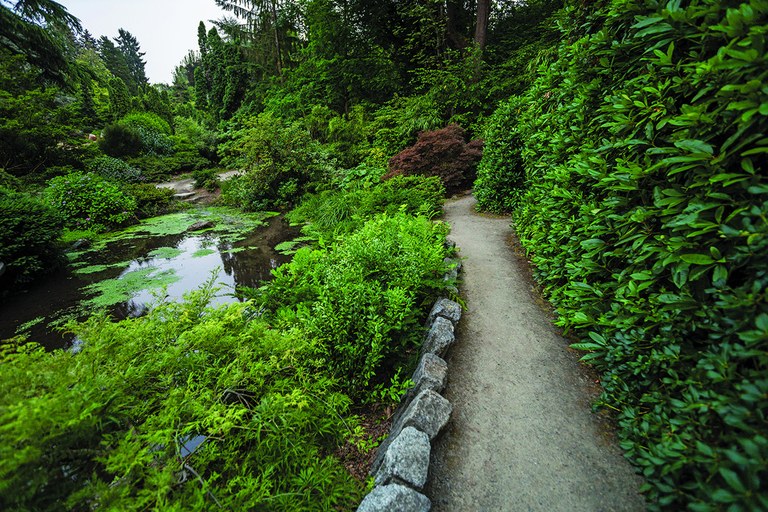
Kubota Garden in South Seattle is a 20-acre oasis that has a long and powerful history in the community. Photo courtesy Seattle Parks and Recreation.
But there’s a problem. Most of our green spaces and urban trails are concentrated in affluent parts of Washington’s cities. There are many reasons this happens, including ongoing social justice issues. These long-standing issues can mean that areas where people have been marginalized due to race or other factors often haven't had the same funds for trails and parks.
Trails are a public good, and we believe everyone deserves access to places to enjoy green space, get exercise or simply connect with other people.
In fact, a recent study about the health, social and economic benefits of trails in Washington state, says that 12.2 percent of Washingtonians are below the poverty level. Such populations are at increased risk for a number of health concerns, including depression, cardiovascular problems and premature death. And according to research, they can benefit more from exposure to nature than those with higher incomes. We want to help ensure that those who could most benefit from time outside have easy access to trails.
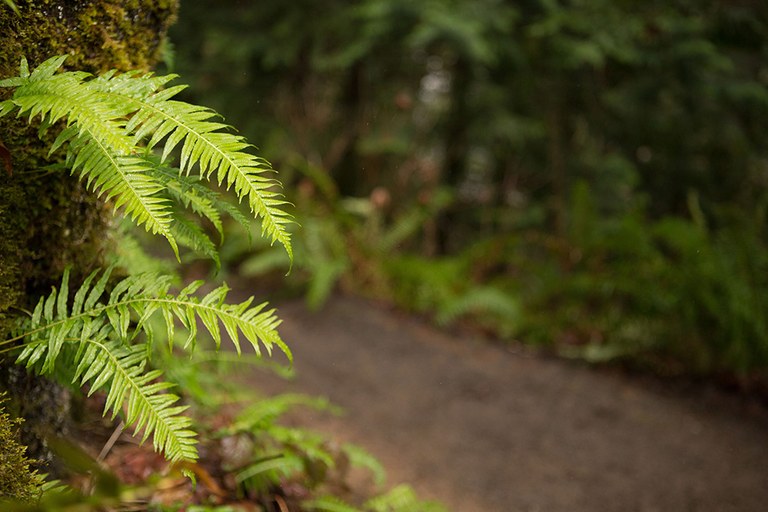
Priest Point Park is one of the areas that WTA has been working to help give hiker access to trails close to town. Photo by Emma Cassidy.
WTA’s vision for the future is trails for everyone, forever. It’s the vision that helps guide all of our work. But we can’t have trails for everyone, forever, without giving every community easy access to nature. That’s why we’ve begun work on The Trail Next Door, which will address the ongoing inequitable public investment by building new trails, better caring for existing ones, advocating for easy access to green spaces in densely populated areas and making it easier for communities to connect to green spaces already nearby.
With The Trail Next Door, we’re building on the successes of our other campaigns, Lost Trails Found and Trails Rebooted. Together, the three campaigns will help build a healthy, sustainable trail system from neighborhood parks all the way to remote backcountry trails. In order for our state to have a system of trails that meets the needs of everyone, we need trails that offer a variety of experiences. And just like one trail work project might require a shovel while another needs a crosscut saw, supporting close-in trails will require different tools than caring for remote trails.
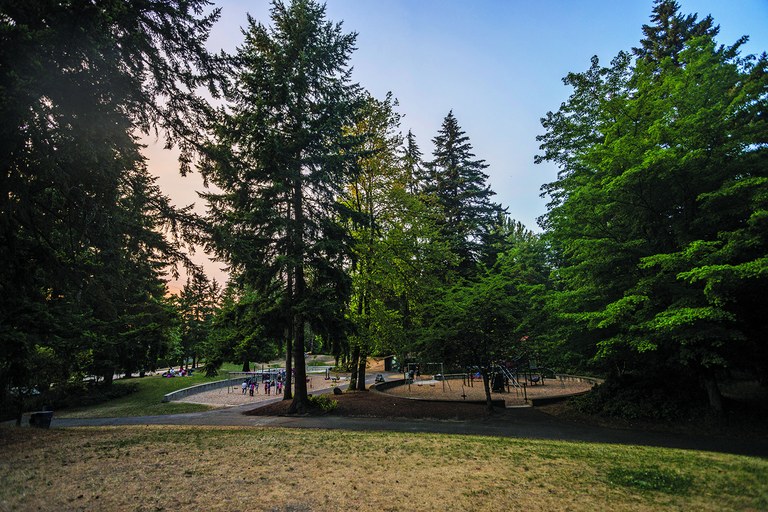
Green Spaces and trails in urban areas, such as Northacres Park in North Seattle offer places for families to play and roam. Photo courtesy Seattle Parks and Recreation.
We’ll use the skills we already have, but look at it a different way. The needs of urban communities will be our focus as we decide where to put our efforts.
It is just in the past few years that Washington Trails Association has been working in city and local parks. When we’re deciding where to work, we consider what trails will give the most people access to nature. For some communities, their local trail may be the only way they are able to spend time in green spaces. We want to prioritize working on those trails.
We will be listening to communities about what they need and want in their own backyards — whether that’s a brand-new trail or simply access to an existing green space. We’re using all our skills — advocacy, fundraising, outreach, teamwork — to help us be better partners. In some cases, we’ll be doing the work, and in others we will be creating connections between local organizations. By helping everyone come together, we’ll build a trail system that will allow folks to hike in their own backyards and the backcountry. And if they don’t want to go any farther than their local trail, we’ll work to ensure it’s the best one possible.
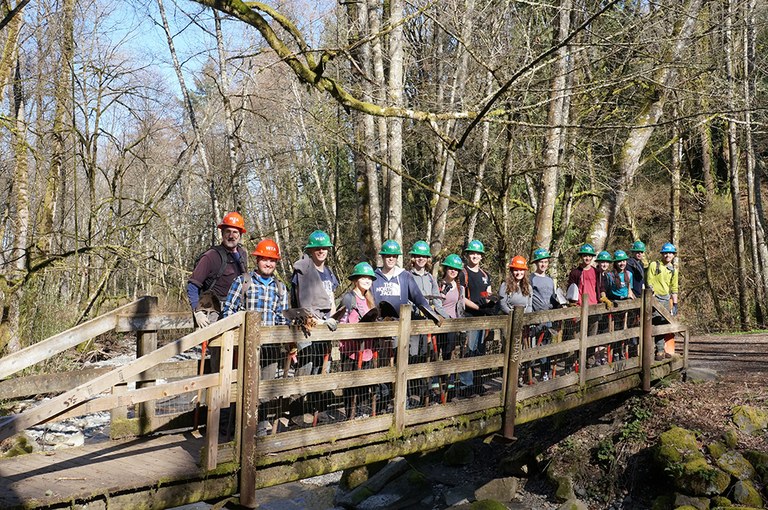
Volunteers have been working at Swan Creek as part of our Trail Next Door efforts. Photo by Aaron Bredl.
Here are some projects we’ve already started working on to improve trails in urban areas.
In the fall, we returned to Bainbridge Island and the Japanese American Exclusion Memorial for a youth and families work party. This was our second year working at the memorial to support restoration efforts in partnership with Northwest Youth Corps and the National Parks Conservation Association. Volunteers removed invasive plants, planted trees and designed horticultural displays. This project shows that sometime trail work itself isn’t what green spaces need to thrive.
As we developed The Trail Next Door, we spent time in the field with the staff from King County Parks who work to acquire land. They shared with us how they prioritize what land to buy. They hope to maximize the impact of new spaces by looking for property that is in areas that are low income, have a higher-than-average rate of health disparities and where many people are within a 10-minute walk of the land. We supported the King County Parks levy last year to help ensure the parks department has the resources it needs.
McKinley is one of the oldest parks in Tacoma. And, as it’s right next to I-5, it provides easy access to an oasis of green in the middle of a heavily-developed area. It features lots of trees and wide trails, as well as a nice playground for kids. A few dozen volunteers joined us in 2019 to improve trails for hikers in the park.
We have hundreds of urban hikes featured in our Hiking Guide. Many of them feature information such as how to get there via transit. But we’ve been learning a lot from our community and partners about what information is more useful for city-park users (versus backcountry trails). In this coming year, we’ll work to add useful information for urban hikers. You can help fellow hikers by writing a trip report for your next urban hiking adventure, tagging #trailnextdoor and even sharing the details of your route!
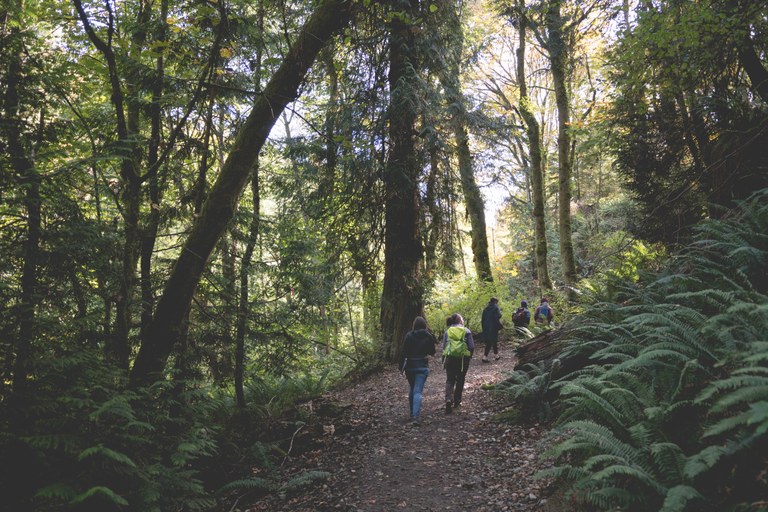
As part of our Trail Next Door work, WTA staff toured Lakeridge Park in South Seattle. Photo by Britt Lê.